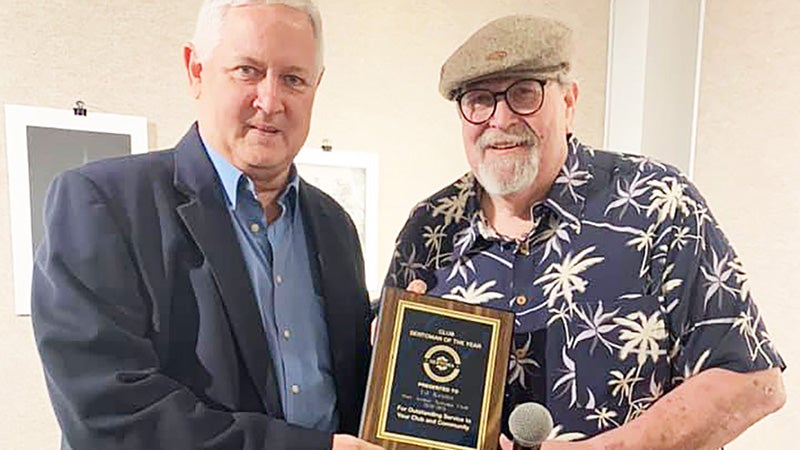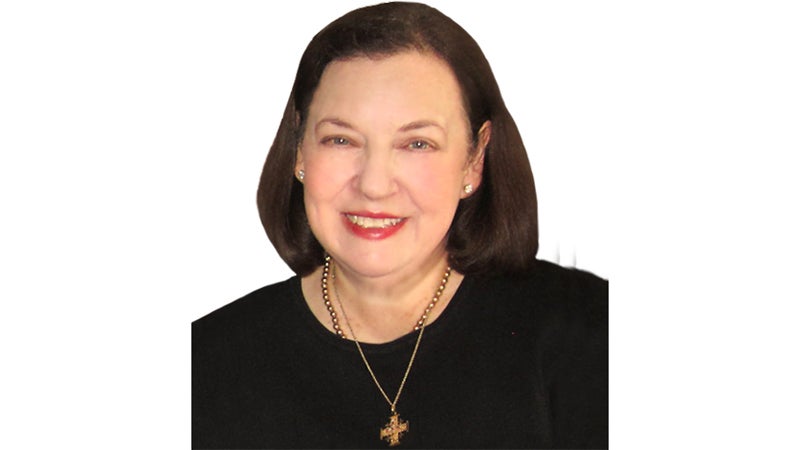Diet instead of medicine
Published 10:08 am Friday, September 16, 2016
Sometimes the best form of medicine is no medicine at all — just good eating.
The Southeast Texas Food Bank has been employing AmeriCorps Volunteers in Service to America (VISTA) workers since August of 2014 to help combat diabetes through healthier food choices for the people served by the Food Bank and its partners.
Amber Brown is the first VISTA worker to come from the area, citing Port Arthur as her hometown. This helps set her apart from the previous two VISTA workers who both came from out of state.
“I can relate to the community,” Brown said. “I am more familiar with the area and feel I could understand a lot of the people.”
When talking about establishing healthy trends in one’s life, the workers at the Food Bank agreed that it starts with a good diet, especially Rachel Hellums, the Nutrition Department Coordinator and Cooking Demonstrator for the Food Bank.
“It adds a component to the community,” Hellums said. “It’s better to have healthy food. It’s actually cheaper to eat healthy, especially for people afflicted with chronic illness.”
Hellums acknowledged that eating healthy might take longer to prepare than most snacking that people regularly do, but she remained steadfast in its benefits.
“Maintaining a healthy well-being is the workplace aura that we try to encourage here,” she said. “If anyone needs a healthy recipe, they come to me.”
Audine Rathbun, Agency Relations Specialist, agreed that a healthy lifestyle was important to combating obesity and poor lifestyle habits.
“We are focused on obesity. We want to either prevent it from becoming diabetes or [to help] people who already have it,” Rathbun said. “The Southeast Texas area has one of the top five highest obesity rates in the state of Texas.”
Rathbun attributed the high rates to poor food habits.
“When people are hungry, they tend to buy more carbs and fatty foods. [Before] you know it, depression sets in and leads to even more poor food choices,” Rathbun said.
“This is the reason we focus on produce drops for areas that would not normally have them.”
Rathbun also cited a lack of education as a common hurdle for diabetics trying to receive proper nutrition.
“It didn’t take money to know what [poor eating] does for my body,” Rathbun said. “Women need to be warned about things like gestational diabetes… and everyone needs to know that the more people there are with diabetes in your family, the more susceptible you are.”
Hellums thought that not having proper facilities to cook in could be another obstacle for some families.
Still, programs like VISTA’s Diabetic Project help to bridge the gap between the Food Bank’s goals and their resources.
“We are a non-profit organization that’s run on a very small staff,” Rathbun said. “VISTA allows us to focus on parts of the community that we wouldn’t normally be able to.”
In addition, Rathbun felt it allowed newer generations to get involved and educated, as VISTA workers tend to be younger. Some, like Brown, are not even out of college yet.
Brown agreed, saying that volunteer services like VISTA “bring new ideas” to the Food Bank.
As for the number of people that the Diabetic Project reaches, Brown estimated it at 107 people in all the counties that the Food Bank helps.
“It’s not about adding more [distribution] partners to the ones we already have,” Rathbun said. “But growing the capacity for the ones that are already there.”
Brown agreed and said they are building relations with health care providers like Gulf Coast to come onsite and deliver blood tests like A1C to people who might need it.
A1C is a blood test that measures a person’s blood sugar levels over a 90-day course. Due to its length, it gives more feedback and a better average than a one-time test would — or “more than a simple pin prick would,” Rathbun said of the older tests.
Brown felt that tests like the A1C would provide more comprehensive feedback in their programs and let her know if “a second education process is needed.”
“We are continually improving the program,” she said.
Still, Brown was optimistic about her new work.
“I’ve been here for one full week and two days. I’m up to the challenge and look forward to see what the year brings.
“I want to educate people on what diabetes is and how to improve their lives if they have it.”
Among the three workers, all agreed that portion control was one of the best ways to positively change one’s diet and to make better food choices overall.
“We’re not saying that you can’t have dessert or anything,” Rathbun said. “That’s one of the biggest myths about dieting. You just have to control your portion of it.”
“Portion size is a huge factor in it,” Hellums said. “We live in a very consumption-based society. It’s hard to break from that.”
In addition to portion control, cooking one’s own meals was another method by which a person could help achieve a healthier lifestyle.
“I love teaching people how to cook, how to create recipes,” Hellums said. “I give the person the recipe and a pen and say, ‘If you don’t like something, change it.’ If you don’t like Brussels sprouts, replace them with broccoli…
“It’s about getting the person to still eat healthy even if they need to change something.”
Hellums mentioned another tactic for clean eating was one that she employed at schools.
“We would give out bookmarks at schools with pictures of fruits and vegetables on them to the kids, and then we’d play a game to see who can check them all off by the end of the week.”
And by “checking,” she meant actually eating the fruit or vegetable pictured.
“It’s about getting people to expand their pallets,” Hellums said.
Promoting a healthier lifestyle was more than just a job to the workers, however, as they enjoyed what they did.
Rathbun said she really enjoys the opportunity to go out and meet people and to see what their agency is doing to help people.
For Brown, it was making a difference in the community and “seeing the reactions in people’s faces makes me happy.”
Still, Rathbun was adamant about the fact that there is no “quick fix” to healthier living.
“People want a quick fix — there is no quick fix,” Rathbun said. “When I told the doctor I wanted a quick way of losing weight, he asked me, ‘Audine, how long did it take you to gain that weight?’
“I said, ‘A while, I guess.’ He nodded and said, ‘That’s how long it’s going to take to lose it then.’”
Rathbun had a simple piece of advice for making that change.
“You have to think I am not on a diet because [eating healthy] is a change of lifestyle, not a diet.”





